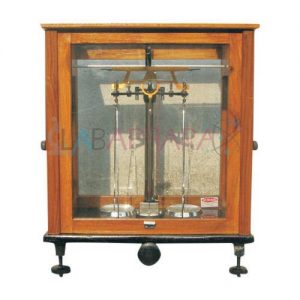Beam Balance Experiment
Objective
To find the mass of the given body by sensibility method, using a beam balance.
Theory
The beam balance is a device used for the determination of the mass of a body under gravitation.
It consists of a beam supported at the centre by an agate knife edge resting on a support moving inside a vertical pillar. The beam carries a light pointer which moves over a scale. There are two stirrups at the ends of the beam which carries two scale pans of equal masses along with adjusting nuts. These can be adjusted to make the pointer oscillate within the scale when the balance is raised. The balance is mounted on a platform provided with three leveling screws which make the pillar vertical. There is a plumb line which shows whether the pillar is vertical or not. The balance is enclosed in a glass case in order to avoid disturbances due to air.
Correct mass of the body using the beam balance,
————————(1)
Where,
W – Mass in the pan
R0 – Zero resting point
R – Resting point with the body counter-poised with weight W
S – Sensibility of the balance.
The sensibility S, the weight required to shift the resting point by one division is calculated from the equation,
R1 – Resting point with 10 mg in the right pan
Learning outcomes
- Students able to know the working principle of beam balance.
- Students learn about the sensibility of beam balance.









Reviews
There are no reviews yet.